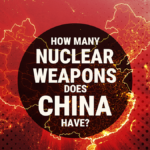Taking stock: The US-India nuclear deal 10 years later
By Subrata Ghoshroy | February 16, 2016
A decade has passed since negotiations first began on the “US-India Civilian Nuclear Cooperation Agreement,” an accord that, when it was finally signed, gave India a waiver from the rules of the Nuclear Suppliers Group. In a nutshell, the act ended a 34-year ban on nuclear trade with India. Popularly known as the “US-India Nuclear Deal,” it was a watershed moment in the history of US-India relations, marking a transition from a lukewarm and sometimes downright adversarial engagement during the Cold War to the warm glow of, if not quite a strategic partnership, then more of a joint venture.
It meant that India—a state known to possess nuclear weapons—was allowed to buy and sell nuclear fuel and technology with the rest of the world for civilian purposes, without having to join the Nuclear Non-Proliferation Treaty (NPT) or dismantle any of its existing nuclear weapons or its nuclear weapons-making program. In other words, India got all the benefits of being an NPT member without any of the drawbacks.
US diplomats agreed to this because there was the presumption that the act would be a way to nudge India towards putting its civilian nuclear facilities—and hopefully, eventually, its military ones—under permanent International Atomic Energy Agency (IAEA) safeguards and inspections agreements, bringing it closer to the NPT regime. But there were many other reasons for the signing of the deal, which had nothing to do with containing the spread of nuclear weapons.
Has anything changed? Who benefited from the deal, and who lost? And what are the prospects for the future?
In my opinion, the deal has mostly achieved its real, yet unstated, goals: vastly improving US-India trade and defense cooperation, gradually opening up the Indian economy, and nudging Indian foreign policy to a closer alignment with the United States. It gave India open access to nuclear trade with the United States and other nations, and de facto recognition as a state with nuclear weapons. Yet while improved US-India relations are good for the two nations involved and for global peace and stability, the accord has contributed to aggravated tensions between India and Pakistan and a nuclear arms race between the two neighbors. By perpetuating the practice of nuclear double-standards, the agreement did long-lasting damage toward both the global non-proliferation norms and the efforts to eliminate nuclear weapons.
So, was the agreement a success? It depends. In a sense, the deal was not completely unsuccessful, as often thought. The nuclear trade with India has not grown, as was feared. But the unspoken goals regarding the direction of India’s economy and its being a team player were largely achieved. Consequently, what we have is more of a mixed bag.
A little background. “At one time, US policy toward India focused nearly entirely on nuclear weapons concerns, with Washington and New Delhi on opposite sides of the issue. The civil nuclear agreement changed that…” a recent report of the Council of Foreign Relations concludes. The report goes on to say: “India is now an active strategic partner for the United States in global nonproliferation, and India is now ‘inside’ the global nonproliferation tent.” These were precisely the goals articulated by the Bush administration and adopted later whole-heartedly by the Obama administration.
But the report neglects another interpretation: The US-India deal actually undermined the global non-proliferation regime and hurt progress toward the total elimination of nuclear weapons, so eloquently articulated by President Obama on a beautiful morning in Prague.
The fact that this viewpoint was ignored is not a surprise. Contrary to the rationale that was put forward for selling the deal—that it was urgently needed to satisfy India’s growing demand for electricity—I would argue that the accord was principally about two things: first, capturing the potentially huge Indian market, and second, making India a strategic partner in US efforts to counter a rising China.
The business interests came first. It was largely the business lobby that helped clinch the deal, as I argued in a 2006 article. Another author argued similarly in a 2009 Bulletin article, a year after the US Congress ratified it. A small coalition of arms control and disarmament activists led by the Council for a Livable World and the Arms Control Association made a valiant effort to stop the deal or, failing that, include tougher conditions on India. They were no match for the business lobbies. (Full disclosure: I acted as an advisor to the coalition.)
The deal sailed through Congress, and the IAEA) and the Nuclear Suppliers Group also acquiesced, after much arm-twisting by the United States.
From nuclear pariah to strategic partner. India conducted a so-called peaceful nuclear explosion in 1974, following which the United States grew concerned about India’s not-so-secret nuclear weapons program. Sanctions were imposed on India under the Nuclear Non-Proliferation Act of 1978. India was further isolated after the Nuclear Suppliers Group prohibited nuclear trade with India by other nations. It served US foreign policy interests during the Cold War to isolate India because it often sided with the Soviet Union in global affairs, despite India’s leading role in the Non-Aligned Movement.
More importantly, India had a tightly controlled economy, which did not allow large-scale penetration of the Indian market by foreign capital. This changed dramatically after the collapse of the Soviet Union in 1991. Almost immediately afterward, India suffered a huge crisis with its foreign currency reserves. To stave off financial disaster, India had to ship its gold reserves to the Bank of England as collateral, so that it could continue to receive funds from international lending institutions.
Under pressure from the United States and other Western powers, India started liberalizing its economy almost immediately, a process that picked up steam with successive business-friendly governments led by the Congress Party and its rival, the Bharatiya Janata Party (BJP), which is in power now. The nuclear-related sanctions stood in the way of free trade and better relations. Efforts to remedy the situation went into a high gear during the Clinton years. However, they hit two major roadblocks, first in 1996, when India refused to sign the Comprehensive Nuclear Test Ban Treaty, and second, in 1998 after India tested its nuclear weapons (quickly followed by Pakistan’s own tests).
As new sanctions were imposed on both countries, the relationship with India chilled for a bit, but this situation did not last. On-going shuttle diplomacy between Deputy Secretary of State Strobe Talbott and India’s then-Foreign Minister, Jaswant Singh from the BJP, continued despite the brouhaha. The new sanctions were lifted and we were off to the races. The Bush administration picked up the mantle after taking office in 2001, by which time the government in India had also changed, from the one headed by the BJP to the Congress Party led by Prime Minister Manmohan Singh. Negotiations conducted in total secrecy led to the signing of the agreement on July 18, 2005 by President George W. Bush and Prime Minister Singh during the latter’s visit to Washington. It caught nearly everyone by surprise, including members of Congress. Only a handful of officials in both governments were in the know.
Officially called the US-India Civilian Nuclear Cooperation Agreement, it quickly shed its formal title, which was a mouthful, and came to be known simply as the “nuclear deal.” And it was sometimes put humorously as “126 for 123,” a phrase which captured the essence of what was indeed a deal, in which one gives something to get something else in return. 126 is the number of fighter aircraft India planned to purchase and 123 referred to the section in the US Atomic Energy Act that needed to be revised by Congress to permit nuclear trade with India. So, in essence, the deal was “You buy 126 of our expensive jet fighters, and we eliminate that troublesome section 123 that prevents trade with India.”
The deal was a de facto admission of India into the “nuclear club” without signing the NPT. Although its status as a country having nuclear weapons remained unclear, India would soon be accorded most, if not all, of the privileges enjoyed by the five countries crowned by the treaty as “nuclear weapon states.”
Under the deal, India could keep its weapons program under wraps and expand it as it wished. All sanctions on India would be lifted. India could now import nuclear reactors and related technology, and material including fissile material like uranium from international suppliers. In return, India would separate its civilian nuclear facilities from those it considered to be a part of its strategic program, and open up the civilian facilities to inspections by the IAEA. Most important, while unstated, was the understanding that India would continue to open up its economy and be helpful to US foreign policy interests.
A milestone is a good time to take stock. The 10th anniversary of the signing of the US-India deal seems an appropriate moment to take stock. In contrast to the newspaper headlines the deal generated at the time, there was nary a whimper this time around. The nuclear part of the nuclear deal had fallen so far out of the limelight that the high-level US-India Energy Dialog held on September 22, 2015 in Washington, D.C.—between the US energy secretary Ernest Moniz and his Indian counterpart, Piyush Goyal—was not even included on the official agenda. Yet, the real goals of the deal have largely been met from both US and Indian perspectives.
From the US point of view, US-India trade has flourished, and defense cooperation between the countries has improved dramatically. According to the US Census Bureau, trade in goods between the United States and India grew from $32 billion in 2006 to about $67 billion in 2014—a growth of more than 100 percent since the deal was signed. In addition, India had taken steps to open its economy to allow foreign investment and privatize previously state-owned enterprises; US exports to India grew by a whopping 339 percent between 2003 and 2012, according to the Office of the US Trade Representative. India had also reduced government red tape in an attempt to make it easier for foreign corporations to do business in India; foreign direct investment in India by US firms stood at $28.4 billion in 2012, an increase of greater than 15 percent in just one year.
While India has not supported US foreign policy 100 percent, it has largely cooperated in isolating Iran and improving its relationship with Israel, two high-priority items for the United States. India is also giving tacit support to the United State’s pivot toward Asia. Although India did join the newly established China-sponsored Asia Infrastructure Investment Bank, which is perceived as a rival of the Washington-led World Bank, there is talk of India being made a part of the US-led Trans Pacific Partnership, which conspicuously excludes China. Under US tutelage, India recently signed a strategic partnership with Japan, thereby bolstering Japan’s aggressive stand in regard to China. India has also entered into a nuclear cooperation agreement with that country.
So, from the point of view of the two sub rosa parts of the agreement, the deal has been a success: Indian markets opened up to US firms, and India (largely) became a willing partner in US efforts to counter a rising China.
But there continued to be pesky questions related to India’s nuclear program. Chief among them is accountability.
The law that stalled the “nuclear” in the nuclear deal. The question is simple, but profoundly important: Who will pay if there is a nuclear accident?
It stalled the implementation of the deal because the United States was not comfortable with India’s 2010 liability law, known as the Civil Liability for Nuclear Damage Act (CLNDA). The Parliament had passed it hurriedly because one of the conditions of the nuclear deal was that India needed to pass legislation that would spell out who would shoulder the liability in the event of an accident.
The origins of this law can be traced back to the legacy of the 1984 chemical plant accident in Bhopal, which killed hundreds of people and affected thousands more who never received adequate compensation from Union Carbide, the large US corporation that owned the plant. The incident remains fresh in the psyche of both countries, which have different perspectives.
Consequently, nuclear suppliers wanted any liability to be ultimately borne by the plant’s Indian operator, not its future US suppliers. The CLNDA did lessen their exposure; however, it did not completely leave the suppliers off the hook in the event of an accident. US suppliers were not comfortable with it because of their own memories of the Bhopal tragedy, which resulted in criminal charges in the Indian courts and an arrest warrant brought against Warren Anderson, then-chairman of Union Carbide and an American.
Prime Minister Singh’s government depended for its political survival on a coalition called the United Progressive Alliance (UPA), which consisted of small center-left parties, including Communists. The coalition became very shaky after the Communists withdrew their support because of disagreements over the deal’s terms. The government by then had become too weak to push through revisions to the CLAND, even if it wanted. Consequently, the implementation of the deal stalled for a number of years.
In the general election held in May 2014, the Hindu Nationalist BJP swept into power in a landslide victory. Its controversial leader, Narendra Modi, became the new prime minister, and he put improving relations with the United States at the top of his agenda. He also had a personal agenda to rehabilitate himself in US eyes. Once a pariah, he was denied for a number of years an entry visa to the United States because of his party’s role in the massacre of Muslim civilians in 2002 in in India’s Gujarat state, where Modi was then chief minister.
But as the saying goes, in diplomacy, there are no permanent friends or enemies, only permanent interests. So, all was forgotten quickly. Within a few months, President Obama and Prime Minister Modi held their first summit in Washington in September 2014. The two reportedly became close personal “friends.”
Addressing the issue of the stalled deal as a high priority, the two leaders announced the formation of a “contact group” to tackle, among other things, the nuclear liability issue. In their second summit a year later, they declared that a solution had been found through the creation of a state-backed insurance pool to cover supplier liability of up to $244 million. According to media reports, the Indian government would cover additional costs of up to $300 million through a special drawing rights account from the International Monetary Fund.
India also agreed to join the UN Convention on Supplementary Compensation for Nuclear Damage, which will soon enter into force. It had been a longstanding US demand. On the other hand, the United States gave up its demand that India allow US agencies to track all the fissile material supplied by the United States. The breaking of the liability impasse was announced during President Obama’s landmark three-day visit to India in January of 2015.
The 2009 nuclear deal had not produced a single new reactor sale to India by US companies. From the US point of view, this was a definite setback; France’s Areva and the Russian reactor supplier had signed contracts to build nuclear power plants in India. But now both sides are optimistic that American firms will be able to compete to build new Indian reactors.
The deal has done precious little to light India’s homes. According to its Department of Atomic Energy, India has a signed a preliminary contract with the Westinghouse Electric Company for a technical feasibility study for AP-1000 reactors for the proposed Mithivirdi Site in Bhavnagar, Gujarat—which, while promising, is a long way from building a power plant. Yet, even after resolution of the liability question, it won’t be easy for US suppliers to gain contracts in India, because of stiff price competition, especially from Russia, but also from India’s indigenous suppliers.
Russia has a leg up because it has already built the Kudankulam plant in Tamil Nadu in southern India. Of the two 1,000 megawatt reactors in the plant, Unit 1 is currently operational and Unit 2 is described as “under commissioning,” which means it is undergoing power tests before going online. Russia is under contract to install two more units there, which will bring up the total to 4,000 megawatts.
The bottom line, however, is that the growth in nuclear power has so far failed to match the projections that India set at the outset: 20 gigawatts by 2020. In the last 10 years, it has barely grown, from 3.3 gigawatts to the present 4.8, doing little to solve India’s growing demand for electricity.
Yet from the Indian point of view, India has benefited significantly from the US-India nuclear deal in the time since the deal was signed. India has come out of nuclear pariah status, US sanctions have been lifted, and India obtained an exemption from the Nuclear Suppliers Group. Since then, India has signed nuclear cooperation agreements with Canada, France, the UK, South Korea, and Japan, and secured uranium supplies from Canada and Australia. And with the removal of the nuclear-related sanctions, India was no longer prohibited from importing many dual-use high-technology components and systems—a prohibition that had previously constrained its space and defense programs, as well as its ability to manufacture electronic components and systems.
But what about the US perspective?
A bigger non-proliferation tent, but a smaller disarmament camp. The United States faced a conundrum a decade ago. Which was more important to the US national security interest: non-proliferation, or a strategic partnership with India? It seems that the answer was the latter. Yes, there was some congressional opposition, but it vanished quickly. And who can really argue against it, with all the benefits that accrue from a partnership between the two countries? One is the only true superpower in the world, and the other is an emerging tiger with a population that will surpass China’s in the next two decades.
But what was the price paid for the partnership?
First, the US-India partnership has done serious damage to the NPT, perpetuating double standards in regard to nuclear power and further weakening the possibility of universalizing the treaty. With India now an accepted member of the nuclear club, there is no chance of India giving up its weapons—and so it will not be able to join the NPT with its existing formulation.
The same goes for Pakistan. It has indeed lobbied for a similar deal and recent press reports indicated that the United States offered perhaps a lighter version of the India deal to Pakistan.
Israel has also indirectly hinted at dropping its so-called “nuclear ambiguity” and entering into a similar arrangement. There is little or no chance for a favorable response from the United States on this issue, given that the NPT member countries have demanded that the United States not block a serious discussion on a Nuclear Weapons-Free Zone in the Middle East that would include Israel and Iran.
But the Pakistan nuclear situation remains unsettled, and a challenge to the nonproliferation regime.
During a White House meeting with Pakistan’s Prime Minister Nawaz Sharif in the fall of 2015, President Obama reportedly turned down Sharif’s request for the same deal as India. Instead, the United States apparently offered to ease the Nuclear Suppliers Group restrictions on Pakistan by giving it a waiver, so that Pakistan could import nuclear technology and perhaps reactors for its desperate power sector. In the meantime, Pakistan is reportedly building up its nuclear arsenal, including smaller tactical weapons that can be used in the battlefield. Yet, just focusing on Pakistan’s non-proliferation past is short-sighted for US-Pakistan relations and also for peace in South Asia.
To make matters worse, as a part of the recent “breakthrough” regarding the nuclear liability issue discussed earlier, the United States has promised to make India a member of the Nuclear Suppliers Group, which would surely irritate Pakistan. China will likely ask that in exchange for India’s membership, Pakistan be admitted, too. Because the Nuclear Suppliers Group works by consensus, China has leverage because it can withhold its consent for admitting India. Media reports indicate that the United States will also facilitate India’s membership into other non-proliferation regimes as well, such as the Missile Technology Control Regime and the Wassenaar Arrangement—a regime for regulating conventional arms and dual-use goods and technologies. Because they allow India to obtain benefits previously withheld from nuclear weapons states that are not NPT members, such actions create bad precedents and a slippery slope that could lead other countries to develop nuclear weapons.
Clearly, the US-India nuclear partnership has complicated the nuclear standoff in South Asia.
Although the uranium India secures from the world market is under IAEA monitoring, India’s smaller reserve of its own uranium is not, and therefore is available to be used for its weapons program. Various estimates by mostly US-based analysts put India’s nuclear arsenal at between 110 and 120 bombs. And in competition with India, Pakistan continues to expand a nuclear weapons stockpile of an estimated 110 to 130 warheads. (One must, however, take these numbers with a grain of salt; no independent verification is possible.)
One may argue that there has been a positive nonproliferation development since the US-India agreement was signed; India has signed an additional protocol to the India-specific agreement with the IAEA for the application of safeguards to Indian civilian nuclear facilities. It entered into force on July 25, 2014.
An additional protocol for India’s civilian nuclear program is indeed a good thing, but India’s military nuclear effort is not subject to it. And leaving Pakistan entirely outside the nonproliferation tent is not a good thing, at all. As the US-India partnership deepens, is Pakistan now further outside that tent? If so, do the benefits of the deal for India justify the world continuing to consider Pakistan a nuclear pariah, compared to a “responsible” India?
While one more country has been brought at least partly under the non-proliferation tent, the tent itself is fraying. The grand bargain contained in the NPT—nuclear weapons countries would disarm, in exchange for other countries agreeing not to acquire nuclear weapons—has been treated as an afterthought. Even President Obama’s inspiring Prague speech contained such gems as “not in my lifetime.” In fact, India’s admission to the non-proliferation tent has effectively removed one of the historically powerful advocates for disarmament from the disarmament camp. Having complained against “nuclear apartheid” and double-standards of the nuclear powers for decades, India is now happy being a beneficiary of the mother of all double standards.
That any discussion of nuclear disarmament has been completely absent in the discourse associated with the US-India deal is indicative of a larger problem. The situation in South Asia—and around the globe as evidenced by the recent events in the Korean peninsula—is not sustainable. The deal has clearly aggravated nuclear tensions between India and Pakistan. While India has boasted of its cruise missile capability and nuclear triad, Pakistan has reportedly developed battlefield nuclear weapons. The proliferation of nuclear weapons will be a constant threat, if disarmament continues to be put off indefinitely.
As a final comment, it is worth noting that most analysts avoid the central point of the India-Pakistan dispute. It is not about nuclear weapons, but about the region known as Kashmir. India does not want any outside mediation to end the conflict, but bilateral talks between the two countries have sputtered for six decades. An arms race in South Asia, both conventional and nuclear, is fueled partially by this long-lasting conflict, nuclear deal or not. But the US-India nuclear partnership has made the conflict harder to resolve, and even more dangerous.
The author would like to thank his colleague Marvin Miller at MIT, who read the first draft and made very helpful suggestions and additions.
Together, we make the world safer.
The Bulletin elevates expert voices above the noise. But as an independent nonprofit organization, our operations depend on the support of readers like you. Help us continue to deliver quality journalism that holds leaders accountable. Your support of our work at any level is important. In return, we promise our coverage will be understandable, influential, vigilant, solution-oriented, and fair-minded. Together we can make a difference.
Topics: Nuclear Weapons, Opinion















